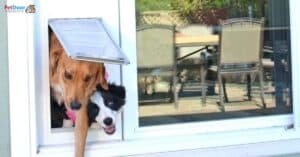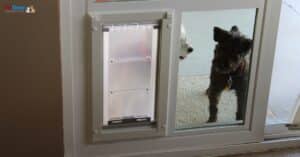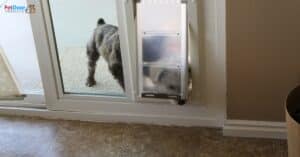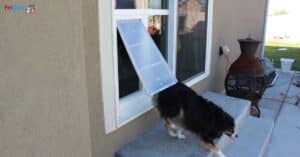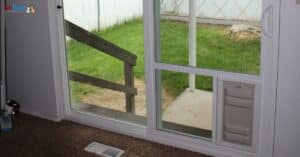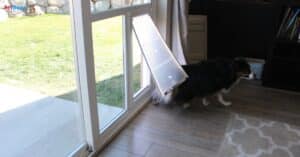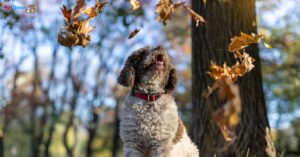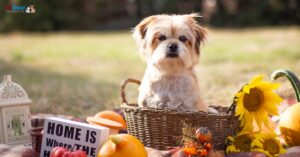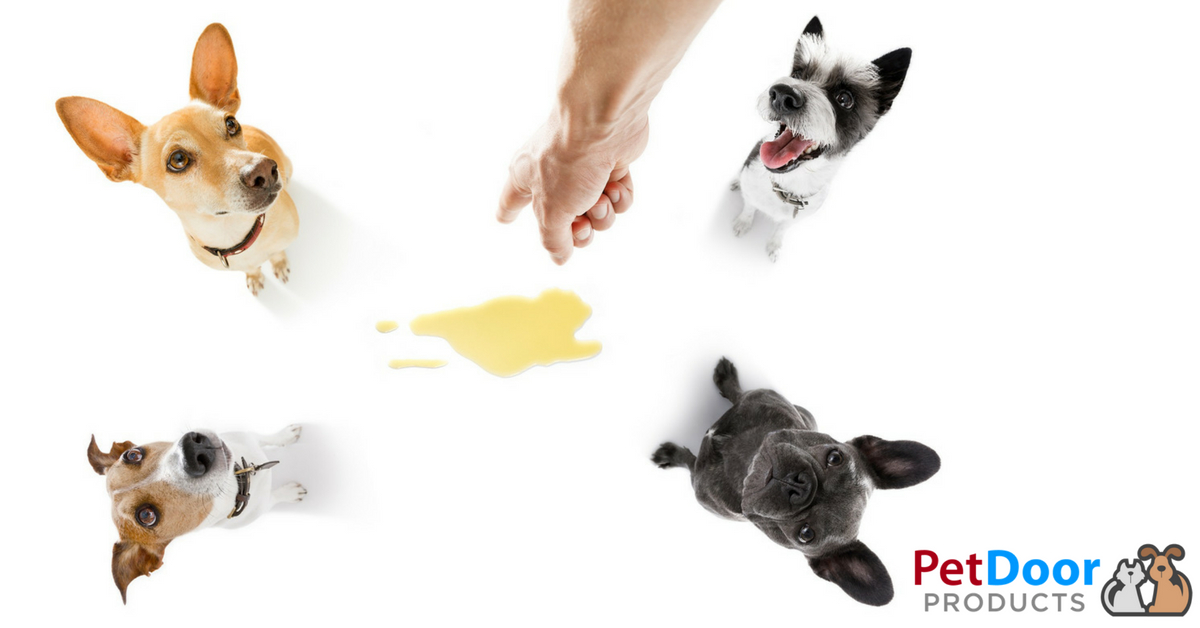
Pet Doors for Dog Breeds that are Hard to Potty-Train

Potty-training a new canine takes confidence and consistency along with a whole lot of patience and understanding. Training the average dog to go outside when they need to relieve themselves can be a formidable situation for new pet owners. But, pets with a stubborn disposition or dog breeds that are hard to potty-train can quickly turn this essential training into a battle of wills, if you’re not fully prepared.
When it comes to training your pup, it is important to be firm but also remember to be patient. Along with house-training and learning new commands, a new puppy needs to feel safe, secure and loved in their new home. There are many things you can do to make potty-training easier for yourself and your pup.
Anticipating accidents in the beginning and the occasional accident during training will help keep your expectations reasonable. The best thing you can do for yourself and your pet is to install a pet door for easy access to ‘go’ when they need to go. For very small dogs, a training pad near where they exit the house to go outside is a good idea until they can master the pet door. Establishing vocal commands early on will help your pooch to recognize your authority, a firm ‘no’ should be the first command learned.
An affordable, customized pet door from Pet Door Products will easily fit into your lifestyle by making crucial house training as convenient as possible. With the freedom to go out when the urge hits and let themselves back in, you’ll avoid the hassle of cleaning up a mess on the floor that most new pet parents have to deal with.
7 Dog Breeds that are Difficult to Potty-Train
There are several different dog breeds known for their incredible traits like obedience and loyalty, and there are those adorable breeds who use crafty manipulation and stubbornness to fight the process of learning to do their business outside, especially if it’s too cold out. If you are struggling with potty-training your pup, he or she may be one of the following dog breeds that are the most difficult to potty-train:
Dachshund
The Dachshund is a bright and clever breed with a fierce, stubborn streak. Dachshund owners will tell you that this feisty pooch does not like to be forced to do anything that they don’t want to. When your Dachshund becomes defensive with growling and snapping during potty-training, do not back down, persistence is key. Try encouraging each accomplishment with loads of praise and a rewarding treat. A pet door is the best solution for a stubborn Dachshund who likes to do things on his or her own time.
Pug
Pugs and pug crossbreeds are obstinate by nature and use manipulation to get what they want. Pug owners need to remind themselves to be consistent and not fall for the adorable puppy dog eyes and hilarious vocalizations that this breed will employ to get his or her way. Offering a treat as a reward is the best motivation for this breed but be sure you only reward after the deed is done, Pugs will do just about anything for a treat and have no shame in begging.
Jack Russell Terrier
Any Jack Russell Terrier owner will tell you that this breed thinks the world revolves around them. House-training should begin early to avoid obedience problems; your Jack Russell needs to learn that they must go outside to do their business whether they feel like it or not. As a hunting breed, Jack Russell Terriers are highly motivated by scent. In the beginning, encourage your pup to potty in the soil to make it easier for them to associate that outdoor scent with relieving themselves.
Small Breeds
Small dogs with big personalities like the Pomeranian, Havanese, Maltese, Pekingese, and Chihuahua are smart and lively and can be bold when it comes to getting what they want (or what they don’t want). Because of this, house-training will go smoothly if you instill a one-word command to signal potty-time like ‘potty,’ ‘outside’ or ‘bathroom.’ While these small breeds tend to be babied, you must be firm about training, even if the weather is less than ideal. Because of their inquisitive nature, a pet door is a perfect solution for potty-training your small breed pooch.
Yorkshire Terrier
The Yorkshire Terrier can be skittish when scolded, and their independent nature can cause problems with potty-training. While Yorkies are known to be babied by their owners; ‘spoiled’ Terriers tend to be high-strung and demanding. A Yorkshire Terrier puppy will respond well to praise and positive reinforcement during house training. You may have several accidents in the house before your pup gets the hang of things because Yorkshires have a very small bladder. Avoid an angered tone when scolding this sensitive breed, try to remain calm and correct a carpet incident with a firm ‘no.’
Siberian Husky
Huskies are clever, dominant dogs that are master manipulators which can make house-training a difficult task if you don’t take control. Siberian Huskies are an incredibly intelligent breed that understands multiple word sentences respond well to time trained. Potty-training with consistent commands like ‘let’s go potty outside’ or ‘it’s bathroom time’ works well with this independent breed. Time training can be achieved with a daily routine, so your pup will come to expect when it’s time to eat, time to play and time to go outside.
Cocker Spaniel
The Cocker Spaniel is a great family dog that can be stubborn at times, especially when it comes to potty-training. The trick with a Spaniel is to train them to go outside to relieve themselves instead of teaching them to not go in the house. Praise, love and a lot of attention are important to this breed. Cocker Spaniels are very intelligent and will recognize commands within a sentence and are receptive to time training. This breed will easily blend into your family and follow your daily routine, the hard part will be adjusting to your daily routine, but it can be done. A pet door will give this playful pup the freedom to come and go without the hassle of letting him or her out throughout the day.
Set Your Puppy Up for Potty-Training Success
Ensuring successful potty-training will save your pup from confusion about where to go and save you from cleaning up after an accident. A puppy should be let out when he or she wakes up in the morning or after a nap and will need to pee and poop within 5 to 20 minutes after eating. Keep in mind that regular mealtimes will help you teach your pooch to recognize when they need to go.
When you catch puppy going in the house, simply pick him or her up and take her outside to the place you want her to go. Harsh punishment may cause your pup to hide when they need to go or make her shy about doing his or her business around you. Consistency and patience will pay off, and potty-training that includes the use of a pet door will set your puppy up for success and give him or her the chance to make you proud.
Overall, the most difficult dogs to potty-train are the ones who do not respect their owners. Establishing your dominance is essential from the get to go. It is also a good idea to make sure every member of your household follows through with house-training to ensure a smooth process. Consider an innovative Pet Door Products sliding door pet door insert that requires no demolition and can be installed in as little as 30 minutes to help your new pooch safely adjust to their new home.
The Innovative Sliding Door Pet Door for Easy Potty-Training
No matter what breed, your dog will enjoy the freedom to potty when they need to and explore the great outdoors with access to cool or warmth and food and water indoors with Pet Door Products sliding glass door pet door. Manufactured in the USA with high quality, durable materials, our pet door products are backed by our limited 15-year warranty. Pet Door Products is a family-owned business located in Salt Lake City, Utah. Through our success, we give back to our community with a commitment to support worthwhile charitable organizations. Contact Pet Door Product at 801-973-8000 for more information and your free estimate.
- How to Choose the Right Dog Door for Extreme Climates - April 19, 2024
- What is the Best Dog Door for Sliding Glass Doors? - April 17, 2024
- Energy Efficient Dog Doors for Sliding Glass Doors: A Climate-smart Move for Pet Owners - April 12, 2024


